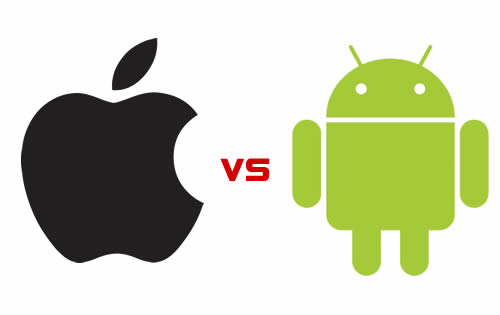
Apple and Google are the two biggest players in the mobile space right now. Android is the most-used mobile operating system in the world, while Apple’s iOS continues to be popular with tablet and smartphone users for its usability.
So how do the two biggest mobile operating systems in the world compare? Here’s our comparison of Android 4.1 and Apple iOS 6.
Voice support
When Apple released the iPhone 4S, the most notable improvement was the addition of Siri, a voice-controlled assistant that helps users search the internet, change settings, and perform other tasks. Google has been working hard on its own version of Siri. It’s called Google Now, and it aims to beat Siri in every possible way.
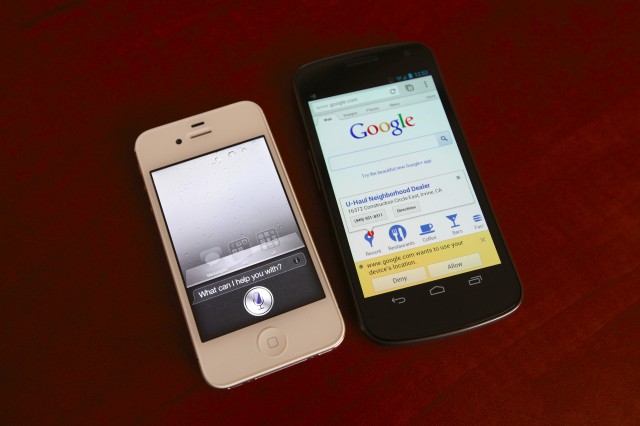
Google Now does everything that Siri does and so much more. You can ask Google Now questions, after which it will find the answer in your phone or Google it for you. However, the true power of Google Now is that it acts as your own personal assistant. It will try to answer questions before you ever ask them. For example, if you’re frequently asking about the scores in last night’s NFL game, then Google Now will start to display that information as soon as you open the app.
According to early reviews of Google Now, it’s also noticeably faster than Siri. If you want a voice app with a more personal and intelligent touch, then you’ll be impressed by Google Now in Android 4.1.
Winner: Android 4.1
Notification delivery
Notifications are an important part of any smartphone. You probably look at your notifications dozens of times per day, and the right notification delivery system makes an enormous impact on the usability of your phone.
Android’s notification system is tough to beat. On Android 4.1, users can easily slide the pull-down notification center to instantly view and respond to any notifications that come their way. While iOS 6 recently gave users the ability to post directly to Facebook or Twitter from the notifications menu, it’s not nearly as functional as Android 4.1’s notification system.
Winner: Android 4.1
Maps
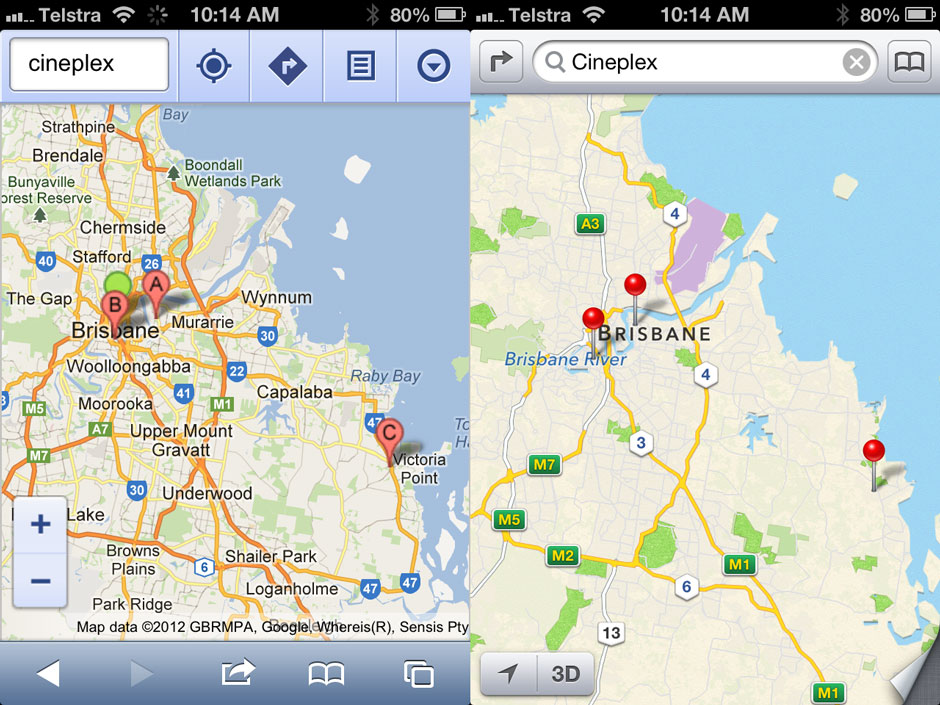
Many view iOS 6 as a step in the wrong direction for Apple. Why? Well, one of the major reasons is Apple Maps. Apple let its personal rivalry with Google become more important than its customer experience when it removed Google Maps from its mobile operating system and replaced it with Apple Maps. Apple praised its Maps app for having a flyover feature that allows users to see a 3D version of the route they’re about to take.
However, aside from the flyover feature, Apple Maps is absolutely brutal for directions. Many cities are poorly mapped out and the application doesn’t feature transit directions or alternative modes of transportation for many cities.
In a strategic move by Google, the company has not yet released a version of Google Maps for iOS 6, which means Apple users are getting lost more than ever before (although Google Maps can still be accessed over a web browser on iOS 6).
In any case, Android 4.1 destroys Apple’s iOS 6 in this category.
Winner: Android 4.1
Home screen
![]()
If you want your smartphone or tablet to look exactly the same as everyone else’s device, then you’ll like iOS, which really only allows users to change their wallpaper. Meanwhile, the Android 4.1 home screen is insanely customizable. Like iOS, Android 4.1 allows users to drag app tiles to wherever they want to go, but that’s not all: Android also gives users the ability to drag widgets onto their home screen.
So, instead of going to an app to read your email or check the weather, Android 4.1 users can set up a homescreen where all of that information is instantly available. This makes each Android device look unique and it also helps users get the information they need more quickly.
Simplicity
A toddler can pick up an iPhone or an iPad and figure out the interface in seconds. While Android is just as usable as iOS, it’s not quite as simplified. In order to use Android to its full potential, users will need to spend a little bit of time figuring out how to drag tiles around, set up homescreens, etc.
In short, Apple gets a very slight edge in this category just because iOS has been simplified as much as possible.
Winner: iOS 6
Apps
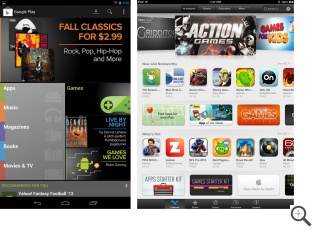
As the two largest mobile operating systems in the world, both iOS and Android have plenty of different apps for users to download. Each store currently features around 700,000 apps, although that number is growing on a daily basis. Almost all mobile developers will create versions of their apps for both Android and iOS. And if those developers haven’t created one yet, then somebody else will.
This category is a solid tie. Both Android 4.1 and iOS have amazing third-party apps for users to download, and Apple’s App Store and Google Play are both very easy to navigate.
Winner: tie
Which one should you choose?
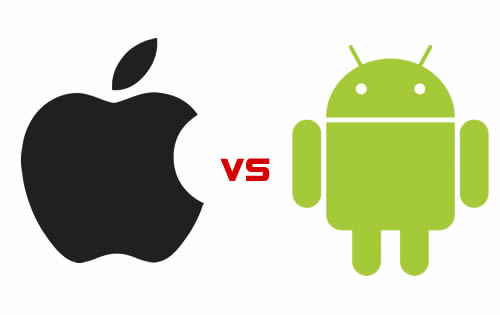
While Android beat iOS in most of the categories listed above, that doesn’t necessarily mean Android is the best choice of operating system for every user. Users who want to keep their phones as simple as possible will be happy with iOS 6. Sure, you might not be able to customize your phone or access as many features as you would with Android, but iOS is one of those Apple products that “just works” (aside from Apple Maps).
Meanwhile, if you’re the kind of user who appreciates fast performance, rich customization options, and vastly superior services like voice recognition and maps, then Android 4.1 will deliver in a major way.
